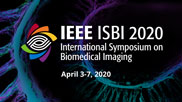Collection:

Synthesis of anatomically realistic ultrasound images could be potentially valuable in sonographer training and to provide training images for algorithms, but is a challenging technical problem. Generating examples where different image attributes can be controlled may also be useful for tasks such as semi-supervised classification and regression to augment costly human annotation. In this paper, we propose using an information maximizing generative adversarial network with a least-squares loss function to generate new examples of fetal brain ultrasound images from clinically acquired healthy subject twenty-week anatomy scans. The unsupervised network succeeds in disentangling natural clinical variations in anatomical visibility and image acquisition parameters, which allows for user-control in image generation. To evaluate our method, we also introduce an additional synthetic fetal ultrasound specific image quality metric called the Frechet SonoNet Distance (FSD) to quantitatively evaluate synthesis quality. To the best of our knowledge, this is the first work that generates ultrasound images with a generator network trained on clinical acquisitions where governing parameters can be controlled in a visually interpretable manner.
- IEEE MemberUS $11.00
- Society MemberUS $0.00
- IEEE Student MemberUS $11.00
- Non-IEEE MemberUS $15.00
Videos in this product
Generating Controllable Ultrasound Images of the Fetal Head
Synthesis of anatomically realistic ultrasound images could be potentially valuable in sonographer training and to provide training images for algorithms, but is a challenging technical problem. Generating examples where different image attributes can be controlled may also be useful for tasks such as semi-supervised classification and regression to augment costly human annotation. In this paper, we propose using an information maximizing generative adversarial network with a least-squares loss function to generate new examples of fetal brain ultrasound images from clinically acquired healthy subject twenty-week anatomy scans. The unsupervised network succeeds in disentangling natural clinical variations in anatomical visibility and image acquisition parameters, which allows for user-control in image generation. To evaluate our method, we also introduce an additional synthetic fetal ultrasound specific image quality metric called the Frechet SonoNet Distance (FSD) to quantitatively evaluate synthesis quality. To the best of our knowledge, this is the first work that generates ultrasound images with a generator network trained on clinical acquisitions where governing parameters can be controlled in a visually interpretable manner.
 Cart
Cart Create Account
Create Account Sign In
Sign In
